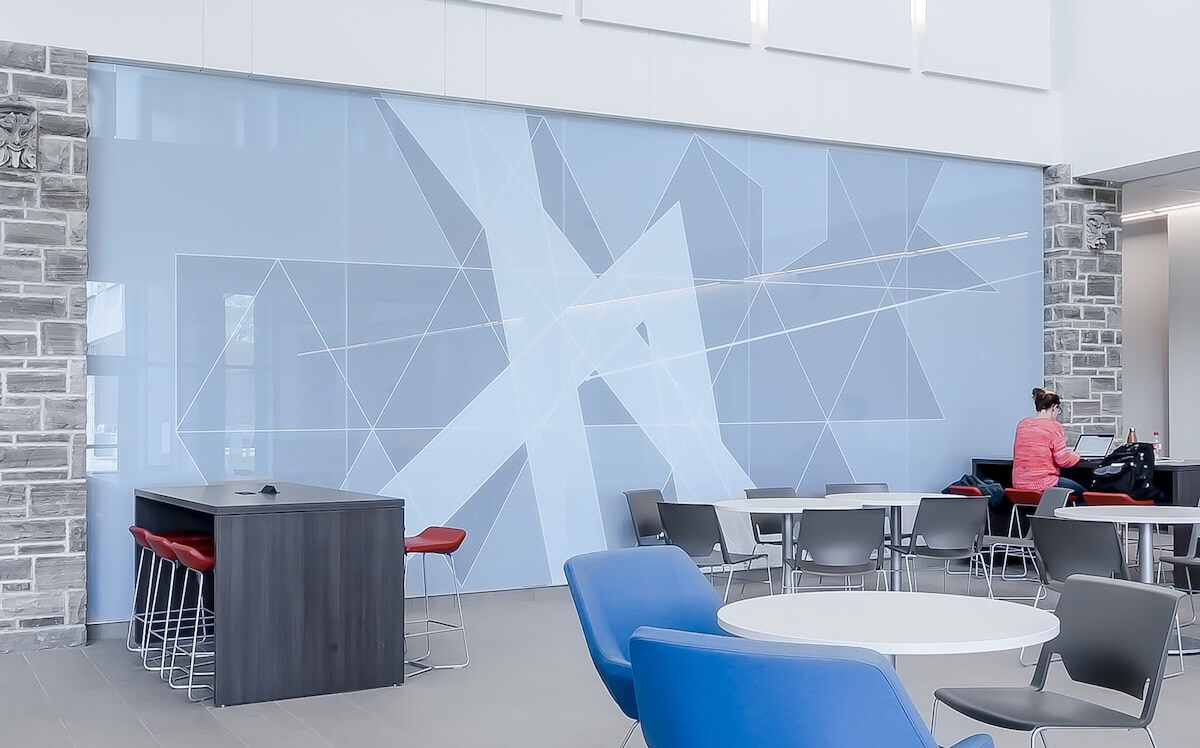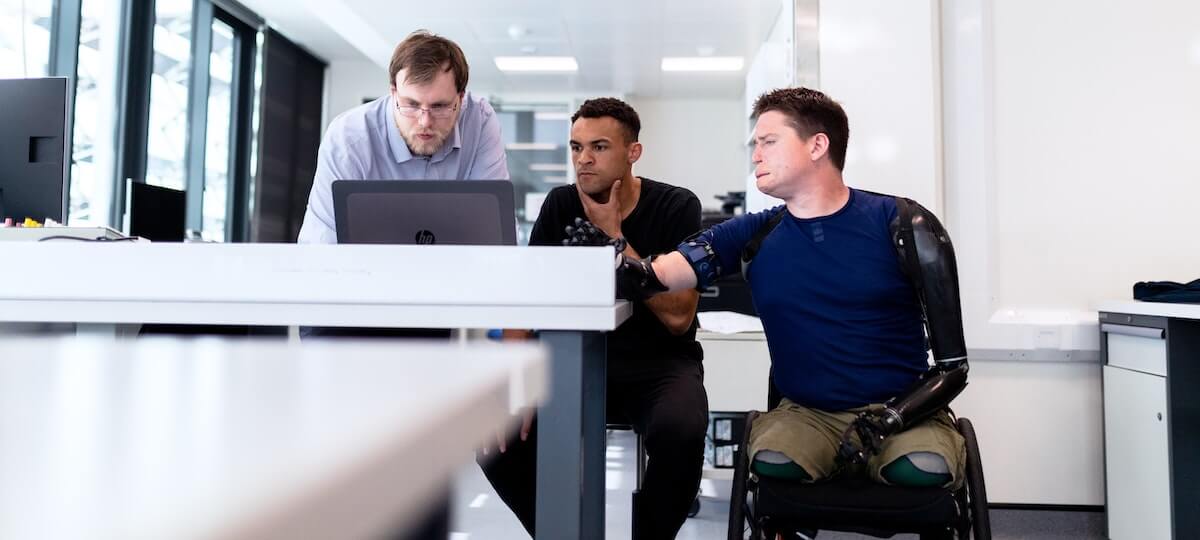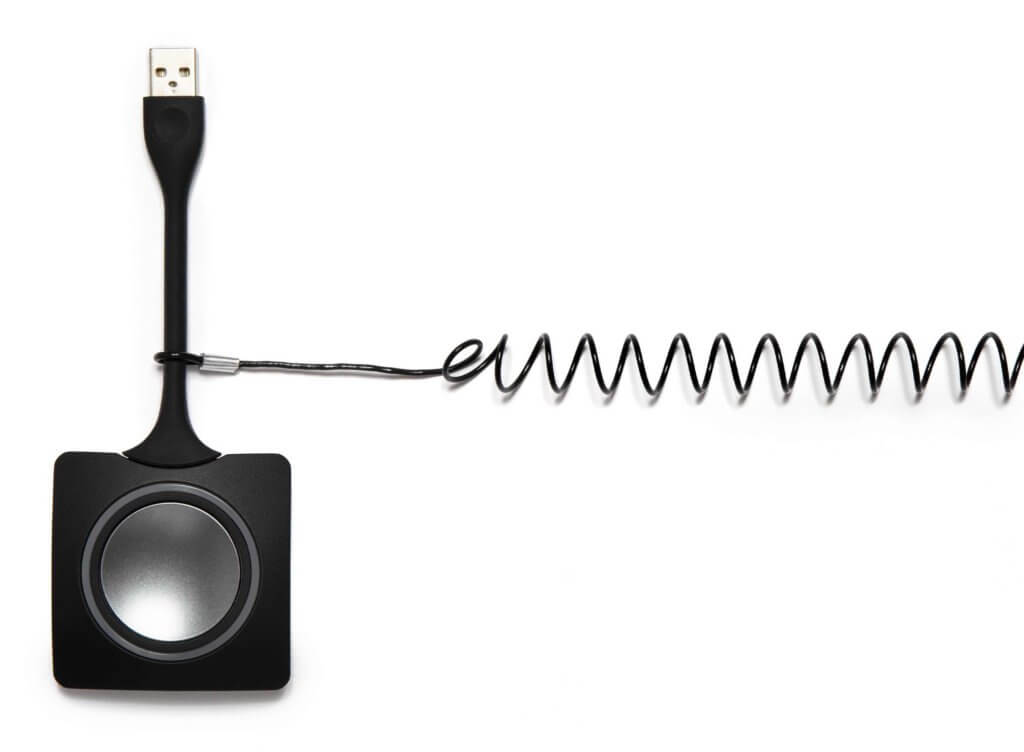As boards, team leaders, and facility managers start to consider how and when to reopen office spaces, many companies are taking advantage of the recent low-occupancy to update their facilities—without a huge financial investment, if possible.
A primary concern as we move into the fall of 2020 is the health and safety of our teams, but there are other reasons to consider updating your work spaces. Good office design, for example, can improve productivity.
Few brands have the budget for overhauling the office layout right now, but there are some easy, budget-friendly ways to design your offices for better productivity.
1. More plants
What if there was one strategy that would reduce stress, improve productivity, reduce sick leave, attract potential employees, clean the air, reduce noise levels, and boost creativity in your office? There is: Plants do all of this.
If you don’t have a green thumb, don’t despair. There’s probably someone on your team who loves plants and would be happy to help. If not, Google, “office plants” or “low maintenance plants” and start there.
2. Cable and adapter tethers
There’s nothing productive about spending the first 10 minutes of a meeting hunting for that HDMI cable or Apple dongle that was supposed to stay in the conference room. But small, valuable items have a way of growing legs.
Cable security tethers are a simple, affordable way to keep cables, adapters, and dongles right where they need to be. The best cable tethers install in seconds and blend seamlessly into your office space.
Additionally, retractable, coiled cable tethers can keep adapters and cords available, while also helping to clear up clutter. Where cables and tethers used to lie strewn across tables or piled in a podium corner, coiled cable tethers maintain a compact design when not in use, but extend for easy accessibility when needed.
3. Better lighting
Poor lighting can cause eyestrain, headaches, and fatigue, as well as depression and irritability. You don’t have to start knocking down walls and creating more windows, though, if your office space isn’t naturally bright and sunny.
Start by swapping out dim, warm bulbs for brighter, cooler ones. Studies have shown that cooler light improves productivity and alertness. You can also use large mirrors and light colored walls to amplify whatever natural lighting you do have.
4. Fresh paint
Speaking of wall colors, a fresh coat of paint is more than an easy way to update the office: The right color(s) can help improve employee productivity too.
A calming, natural blue is every interior designer’s go-to shade for office space accent walls. Blue is calming and stable, and has repeatedly been shown to help employees focus and improve productivity.

5. Snacks
Everyone appreciates a break room stocked with snacks, but the key to improving productivity is supplying the right snacks. Junk food can create a quick, immediate surge of energy, but then people crash.
Stock your break room with snacks that fuel the brain: trail mix, yogurt, granola bars, jerky, berries, and dark chocolate. Lean, healthy snacks can help your team stay alert and focused throughout the afternoon.
Office snacks actually do more than just feed brains. The availability of a different space and a supply of snacks encourages community and short breaks—both of which improve creativity, problem-solving, and overall productivity.
6. Personal touches
Encouraging employees to bring their personalities to their desks helps them feel more comfortable and less stressed, dramatically improving productivity.
The best part is that this requires very little from the company, except maybe some policy updates. Allow and encourage people to display photos or toddler art in their spaces, or relax the office dress code to let people bring more of their personality to work.
7. Movement
Sitting at the same desk all day isn’t good for anyone’s physical well being or their productivity. And you don’t have to redo the entire office layout to encourage movement.
In addition to a comfortable break area full of snacks, consider arranging a few other causal work spaces. It might be a couple upholstered chairs around a coffee table, or a conference room repurposed as a communal work space with adjustable standing desks. Consider any outdoor space you may have as well: Could it be set up as an outdoor work space or an outdoor break area?
8. Accessibility
As you consider office design updates to enhance productivity, remember to keep them accessible for all of your current or future employees.
Make sure that any new equipment, for example, is accessible. Adjustable desks, for example, should go high enough for standing, but also low enough for wheelchairs. Make sure cables are tethered where everyone can reach them, and ask if any new lighting can be installed with motion sensors as well as traditional switches.

9. Bragging rights
Employees want to know that the work they do every day is important and that it’s making an impact. Sales and marketing usually get to hear those stories, but the dev team and the IT department were part of those wins too.
Maybe it’s posters with customer testimonials in the hallways or a flat screen in the break room that displays automatic Slack messages when new feedback comes in or a new deal is closed. Or maybe it’s a well-placed gong that’s rung in celebration.
10. Air filters
Plants in the office will help filter the air, but creating truly healthy indoor air quality (IAQ) requires a good air filter. It’s not an office upgrade that employees will notice when they come back, but air quality has dramatic effects on productivity.
Improved air quality has proven to reduce sick leave, reduce headaches, and improve cognitive performance.
11. Art
In addition to increasing productivity, art in the office can help reduce stress, increase creativity, boost morale, and broaden the appreciation of diversity.
And it can fit just about any budget. You don’t need to invest in a Monet to boost your team’s productivity. Visit a local gallery and reap the benefits of art in your office space, while also supporting a diverse set of local artists.
12. Sound buffers
Office noise decreases employee productivity by increasing stress and diminishing focus. Open floor plans make this especially difficult, but you can employ some strategic office design considerations to help mitigate the problem.
If you can’t redesign the office layout right now, consider setting up a few quieter spaces where people can go if they’re feeling distracted or overwhelmed. Maybe a conference room that doesn’t get much use, again, can be repurposed. Or maybe one end of a communal work space gets some extra upholstery (and plants) to help make it quieter.
How to make your office space more productive
If you’re updating your offices to welcome your employees back—or if you’re just looking for ways to improve your team’s productivity—some simple office design strategies can go a long way.
Two of the easiest first steps are probably plants and security tethers. And whether they need to keep adapters in the conference room, cables in communal work spaces, or dongles attached to hardware, more companies prefer TetherTies for their low cost, high quality, ease of use, and flexible design.
